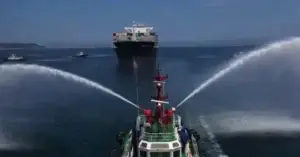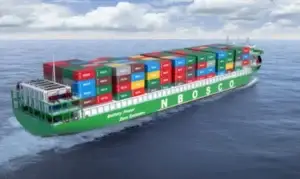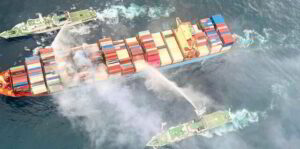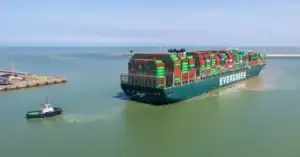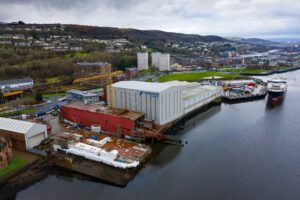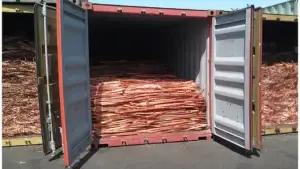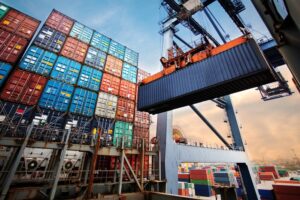The Panama Canal: A Monumental Feat of Engineering, History, and Geopolitical Intrigue
Introduction
The Panama Canal, a 50-mile (80-km) waterway that serves as a conduit between the Atlantic and Pacific Oceans, is not just an engineering marvel but a living, breathing entity with a rich tapestry of history, geopolitics, and human endeavour. It has been the subject of international fascination since its inception, and its story is one of triumph, tribulation, and enduring global significance. In this comprehensive article, we will explore the canal’s history, its strategic location, its multifaceted uses, the entities that operate it, and the myriad stories—both serious and humorous—that make it a subject of unending interest.
Location: The Geographical Marvel Where Two Oceans Meet
Nestled in the narrow Isthmus of Panama, the slender land bridge that connects North and South America, the Panama Canal is a geographical marvel. It cuts a swathe across the isthmus, linking the Atlantic Ocean (via the Caribbean Sea) to the Pacific Ocean. This strategic location has made it an indispensable component in global trade routes, effectively eliminating the need for ships to navigate the perilous 12,000-mile journey around the southern tip of South America, known as Cape Horn.
The canal’s location also has geopolitical implications. It has been a focal point for international diplomacy and military strategy, given its ability to control access between the world’s two largest oceans. During both World Wars, the canal served as a critical pathway for the movement of troops and supplies, highlighting its strategic importance beyond commercial applications.

A Detailed History: From Conception to Completion
The Early Visions
The idea of a canal in Panama dates back to the early 16th century when Spanish explorer Vasco Núñez de Balboa first crossed the isthmus and discovered that the Atlantic and Pacific were separated by a mere strip of land. The Spanish Crown considered the idea but was deterred by the technological limitations of the time.
The French Misadventure
Fast forward to the 19th century, and the first significant attempt to build the canal was led by Ferdinand de Lesseps, the French engineer who had successfully built the Suez Canal in Egypt. De Lesseps was a national hero, and his involvement brought significant public interest and investment. However, the project was doomed from the start. Plagued by diseases like malaria and yellow fever, which decimated the workforce, and further hampered by logistical nightmares and financial mismanagement, the project was abandoned in 1889. Over 20,000 workers lost their lives, and the failure led to a public scandal in France, culminating in de Lesseps’ bankruptcy and disgrace.
The American Triumph
In 1904, the United States, under the bullish President Theodore Roosevelt, took over the project. Roosevelt saw the canal as a testament to American ingenuity and a means to assert U.S. military and commercial power. Armed with better technology, including steam shovels and dynamite, and crucial medical knowledge that helped combat tropical diseases, the Americans were able to complete the canal in 1914.
The construction involved the creation of the massive Gatun Lake, one of the largest artificial lakes in the world at the time, and the engineering marvel known as the Panama Canal Locks. These locks function like water elevators, raising and lowering ships as they traverse the canal’s different elevations.
Usage: The Lifeline of Global Trade
The Panama Canal is not just a waterway; it’s a lifeline for global trade. On average, the canal accommodates over 12,000 transits each year, moving hundreds of millions of tons of cargo. The types of goods that pass through are incredibly diverse, ranging from grains, automobiles, and machinery to oil, natural gas, and consumer goods.
The Economic Impact
The canal contributes significantly to global economies. For Panama, it’s a major source of revenue, generating billions of dollars annually through tolls and related services. For the world, it facilitates quicker and more cost-effective trade routes, thereby lowering costs for consumers and boosting economic activity.
The 2016 Expansion
The canal has undergone several expansions to accommodate the ever-increasing size and volume of modern cargo ships. The most recent significant expansion was completed in 2016, known as the “Panama Canal Third Set of Locks” or the “Panama Canal Expansion.” This expansion allows for the passage of larger “New Panamax” ships, which can carry up to 14,000 twenty-foot equivalent units (TEUs), almost three times the previous limit.
Who Operates It?
Since December 31, 1999, the Panama Canal has been under the full control of the Panamanian government, managed by the Panama Canal Authority (Autoridad del Canal de Panamá, or ACP). This transfer of control was a monumental moment in Panama’s history, marking the end of nearly a century of American oversight and symbolising Panama’s full sovereignty.
The ACP is responsible for the day-to-day operations, maintenance, and modernisation of the canal. It’s a self-sustaining entity, generating its revenue from toll collections, which are used to fund its operations and expansions.
Stories of Interest, Problems, and Humour
The SS Ancon: The First Official Transit
The SS Ancon holds the honour of being the first ship to officially transit the canal on August 15, 1914. Interestingly, the world paid little attention to this monumental event, as it was overshadowed by the outbreak of World War I.
The Chicken and the Egg Incident
In a lighter vein, there’s the story of a Panamanian farmer who, in the 1950s, rowed across the canal daily to sell eggs to American workers. One day, he arrived with a chicken under his arm, claiming it laid eggs en route. The amused canal operators let him pass toll-free, declaring that any chicken smart enough to lay eggs while commuting deserved free passage.
Environmental and Logistical Challenges
The canal is not without its share of problems. Environmental concerns, such as deforestation and water usage, pose ongoing challenges. Additionally, the increasing size of modern cargo ships has led to concerns about the canal’s ability to accommodate them, even after the 2016 expansion. Accidents and delays, although rare, do occur, causing ripple effects in global trade.
Conclusion
The Panama Canal is a living testament to human ingenuity, resilience, and the complexities of geopolitics. From its tumultuous history to its pivotal role in shaping international commerce, the canal remains a subject of fascination and importance, not just for Panama but for the world at large. Whether it’s the tale of a farmer’s ingenious chicken or the geopolitical implications of its control, the Panama Canal continues to captivate and intrigue, standing as a monument to what humanity can achieve when faced with seemingly insurmountable challenges.




